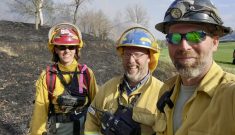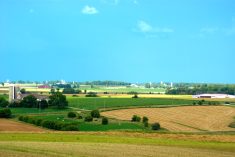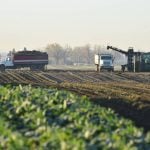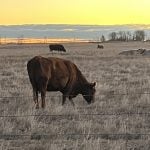Increasing propane costs and the carbon tax lit a fire under Matt Kittell to invest in a biomass grain dryer.
Kittell said three factors spurred him and his father-in-law John Henderson, to research a different way to dry grain on their Mount Brydges farm by replacing their four-year-old propane dryer.
Why it matters: The rising costs of fossil fuels compounded by Canada’s carbon pricing scheme has the Ontario agriculture sector looking for cost-saving opportunities, including investing in biomass fuel grain driers and heating options.
Read Also
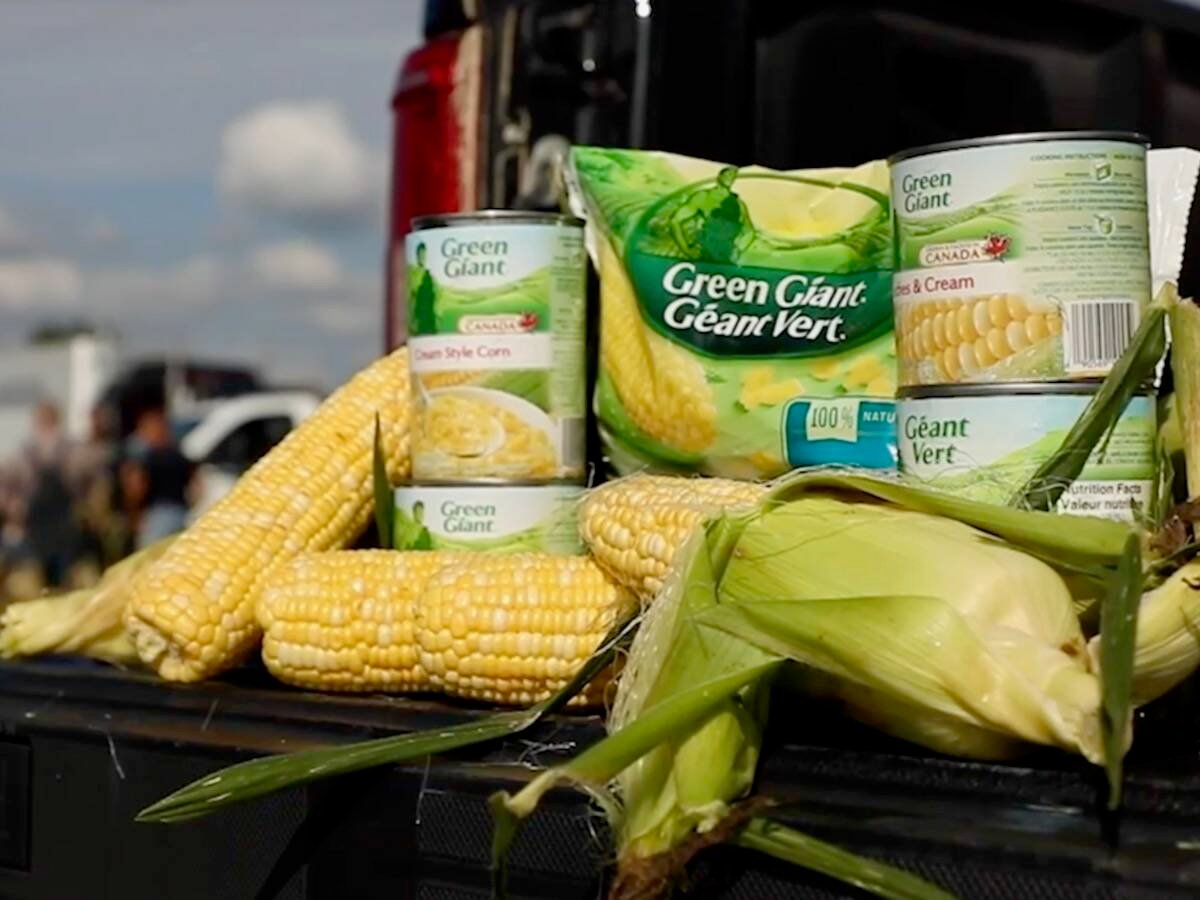
Packer buys Green Giant, Le Sieur veg brands from U.S. owner
A Quebec-based processor’s deal to buy the Green Giant and Le Sieur packaged and frozen vegetable brands in Canada from a U.S. owner clarifies the status of two popular retail brands grown by Canadian farmers.
Three factors encouraged Kittell and Henderson to investigate alternatives to fossil fuels for grain drying; natural gas was not available, the cost of propane doubled, and the addition of a carbon tax made it untenable.
They began researching BioDryAir biomass dryer by Manitoba’s Triple Green Products.
“This is their first go at drying grain. A year ago, they put one in at a test site in Manitoba and made it work. We went to visit it (the prototype), and that sold us on the concept,” said Kittell.
“It took some doing to get it fine-tuned enough that it was going to work here, and by the end of the season, we had it working like a Swiss watch.”
Financial incentives like the federal Agricultural Clean Technology Program (ACT) spur the adoption of alternative fuel systems and investment in on-farm infrastructure required to make them profitable.
Developed for the mining sector over a decade ago, Lyall Wiebe, co-founder and general manager of Triple Green Products, said they began adapting BioDryAir for grain drying three years ago.
“I was born and raised on a farm; I get it,” Wiebe said. “Part of grain drying is a cost, and fossil fuels are expensive.”
Timing is everything when it comes to innovation, said Wiebe. They hit the sweet spot with the BioDryAir thanks to increasing fossil fuel costs, the carbon tax and government funding initiatives to spark alternative fuel uptake.
“We’ve converted several farms, big livestock farms, in Manitoba because the carbon tax was more than the coal (they used),” he said. “That takes guys off coal, and now they’re heating green, and they’re saving money.”

They’ve also converted a few greenhouses in southern Ontario, including installing a 100 million BTU system in a Niagara-area greenhouse that converts construction and demolition waste into heat at a low cost. He said there is a good buy-in from the greenhouse sector with those who want to be conscientious good stewards to the environment.
“Canada is one of the biggest suppliers of biomass in the world. It’s right close to the top. Do you realize how much biomass gets burned in Canada? Next to nothing,” he said.
“We could take 100 per cent of the Leamington greenhouses off natural gas just by diverting some of the ships that go across the ocean to Europe to go down the St. Lawrence Seaway and unload it.”
And, he said, lower the cost of doing business.
“(The $127,000 in funding) certainly helped us make the first step,” said Kittell. “Because it’s a very expensive project that we’ve done here, and it came in the nick of time for us.”
The funding covered 50 per cent of the initial budget, including a concrete pad and building to cover the BioDryAir, but they went over budget to create space for future expansion.
“When you can pin this to an actual ROI (return on investment), it’s pretty substantial,” said Wiebe. “(Farmers) know their drying costs. If I can reduce (those) by, let’s say, 60 to 70 per cent, that’s real. And the more money they spend (on fossil fuels), the more real it becomes.”
Wiebe estimates Kittell’s ROI is around two years, and Kittell said he’s not far off. It would be spot-on if they went with wood chips instead of the more expensive pellet option as their biomass of choice. However, because the farm already had the infrastructure to store and drive wood pellets into the dryer, it made more sense to absorb the slightly higher cost for convenience.
“I think our specific project here before funding, we were looking at maybe four years, and with the funding, we’re a year-and-a-half to two-years payback,” said Kittell. “This year would have cost $200,000 in propane to under $40,000 in wood pellets. So, the $126,000 that you’ve put down, and the government paid for the other half, you’ve paid it back in fuel essentially.”
Kittell said he was concerned the hydro increase for running 75 amps of motors would offset the savings. However, the variable speed drives and soft-start motors meant 90 per cent were running half-speed when drying, making the cost negligible from the year before. Before he can say BioDryAir works definitively as efficiently on higher moisture corn as it did at lower moisture, he wants an entire season of use, which didn’t happen this year.
But he’s not worried it won’t fulfill his expectations, and the cost savings may lead to expansion earlier.
“If you’re saving 80 per cent on your fuel costs every year, that’s money you had budgeted that you can put elsewhere,” he said. “You’re talking more bins, more legs, more elevators, or you can invest land, or you can tile the land you have,” he said.
“It opens up quite a few dollars for expansion.”
Adopting biomass carries a higher price tag than upgrading a 20-year-old propane dryer; however, the ROI in long-term cost analysis, especially with carbon tax increases forecasted into 2030, shows significant savings.
Even with top-of-the-line technology in place, the cost of doing business in a 10-year projection pointed towards not growing corn as the more sensical option, especially with the double and tripling of fertilizer sources in terms of dollars-per-tonne.
“It’s come to a point where, on our operation, maximizing profits isn’t coming from maximizing yield,” he said. “It’s actually coming from reducing cost wherever we can, and this is a really good avenue for doing so.”
James Dyck, Ontario Ministry of Agriculture, Food and Rural Affairs engineering specialist for crop systems and the environment, said demonstrated financial business cases for alternative fuels would help in widespread adoption of the technology.
Farmers need a profitable business and proof innovation investments will be profitable somehow.
“If we can have some solid case studies, especially on big-ticket items like grain dryers, that we can point to it can really help to showcase to farmers who are on the fence and say this really is a good idea; you could make some improvements and save some money by doing this,” said Dyck.
A large company from Michigan recently visited Kittell’s BioDryAir unit and is interested in 18 units, said Wiebe. Business is ramping up so quickly in Ontario they hired another specialist to deal with demand.
“We’re gearing up production; we’re gearing up by hiring more people because of what’s coming,” said Wiebe.
They are investing in a product to utilize biogas for heating. The new units will capture swine and cow manure biogas for heating systems but are approximately three years from being market ready, said Wiebe.
“Over the next five years, we’re going to be putting a lot more money into R&D, and we believe our sales will continue to increase,” he said.
“More farmers are going to come to our technology because fuels are going up, and our products meet the demands of where our world is going.”





